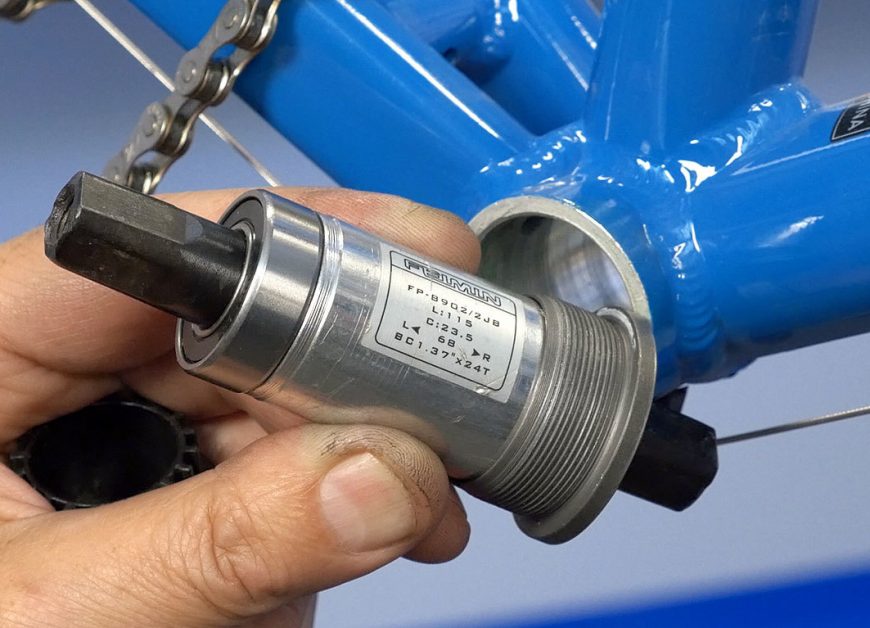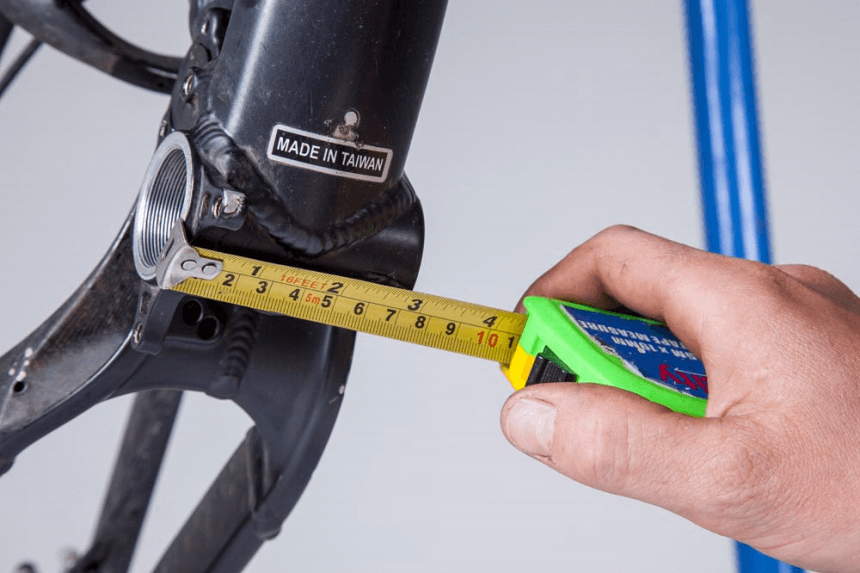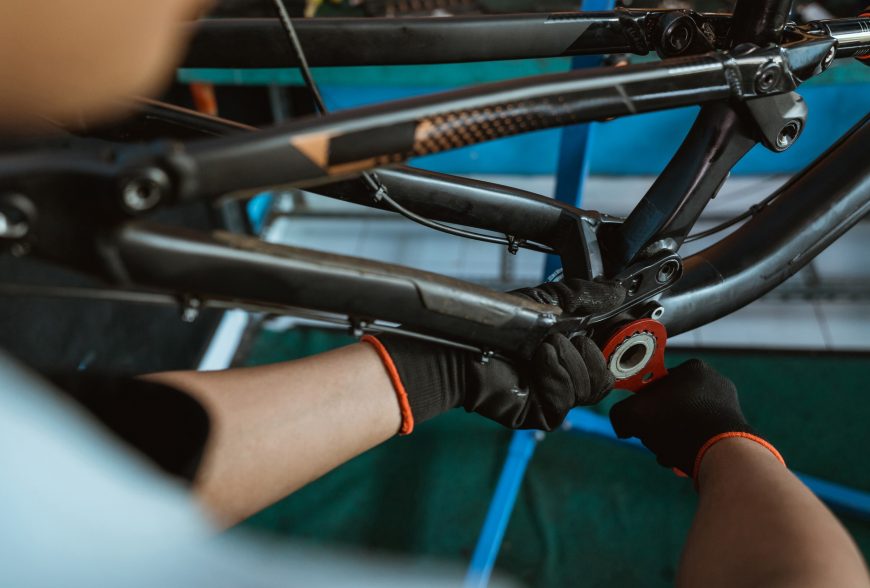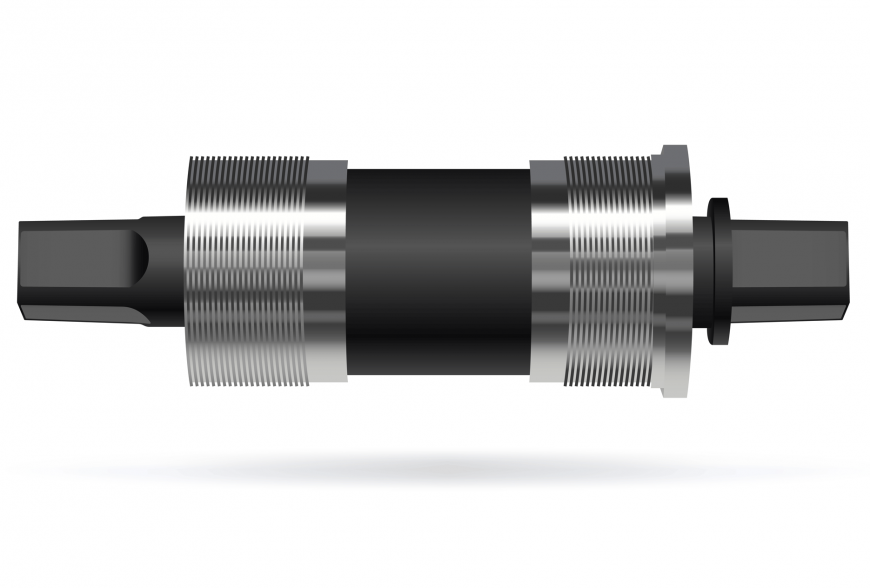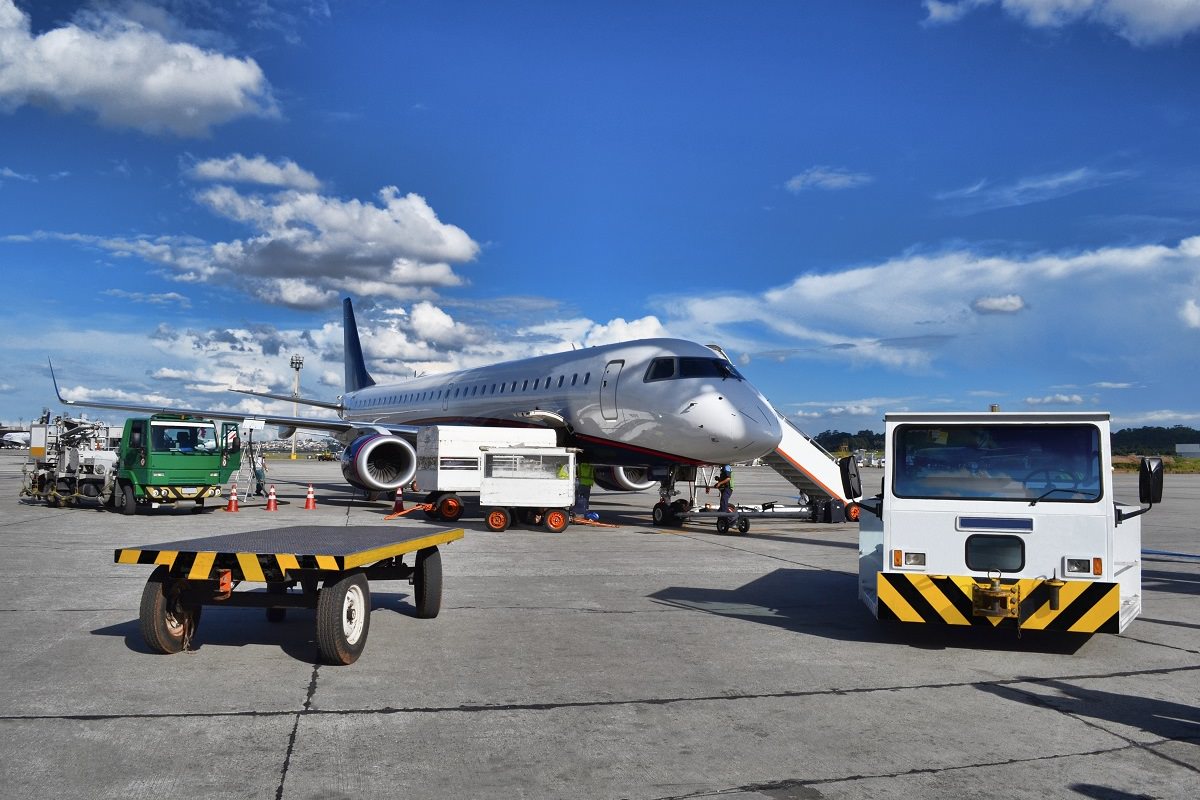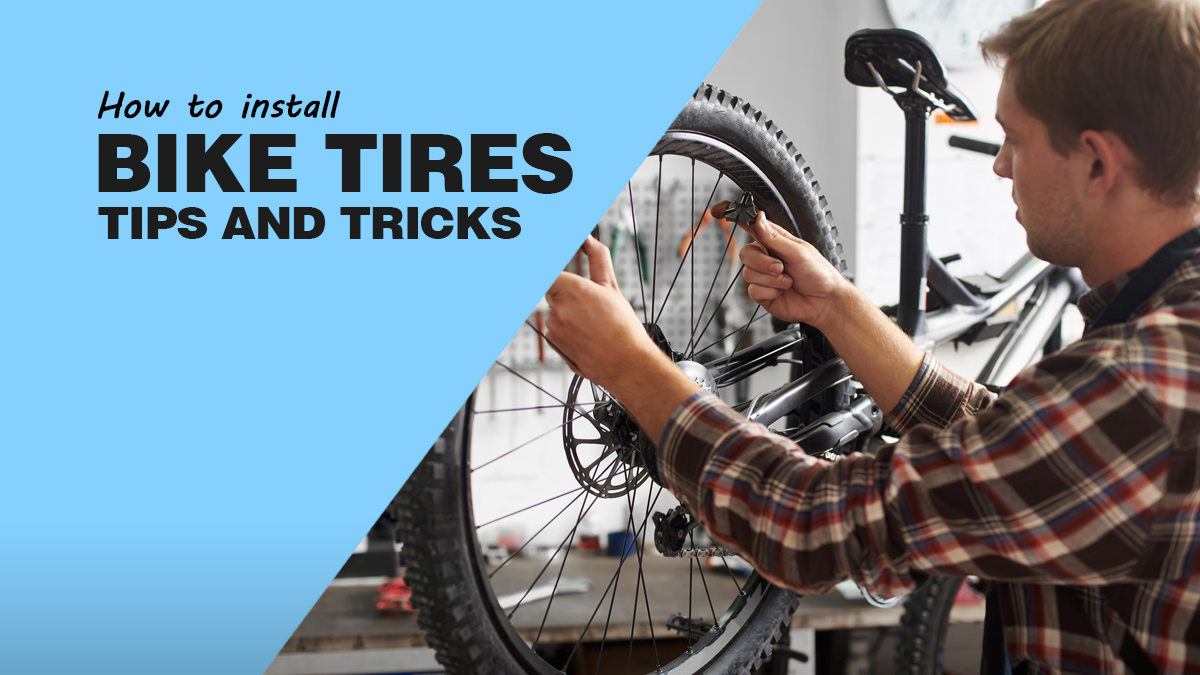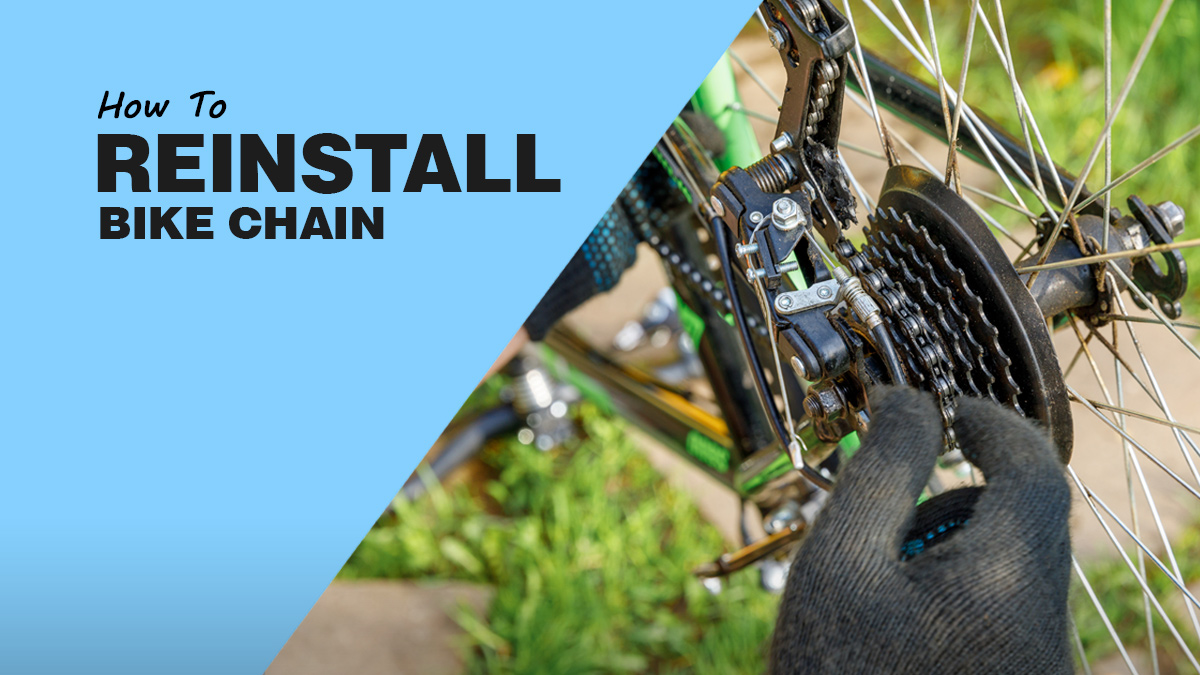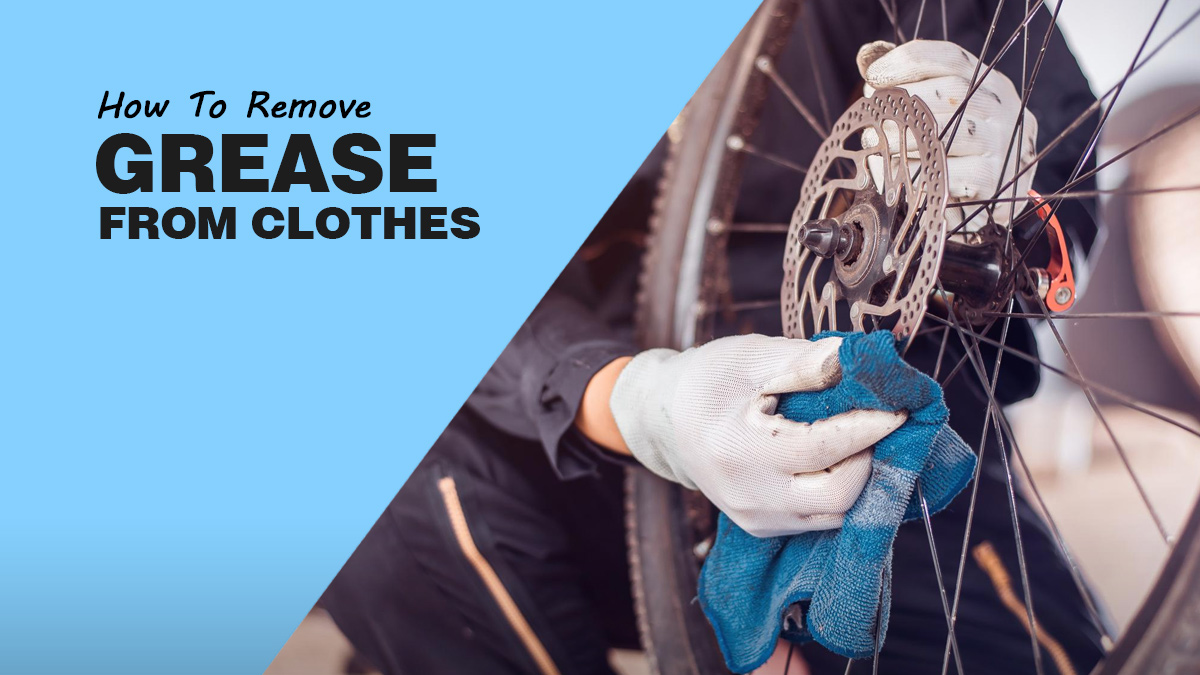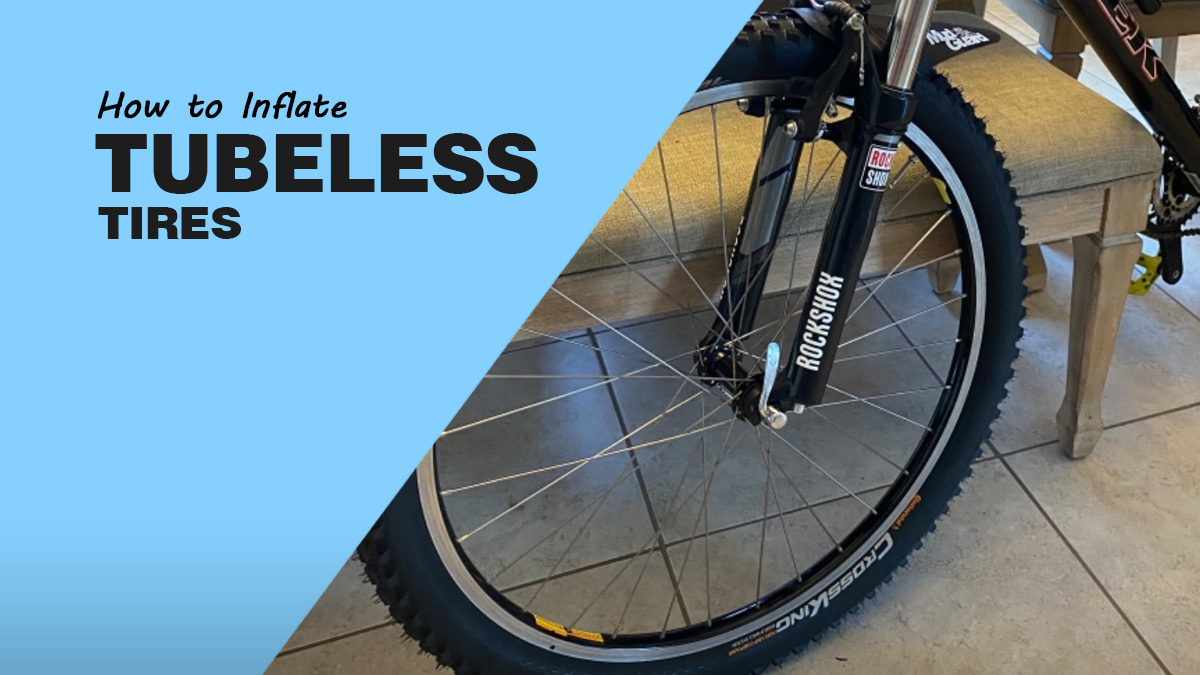Ever heard of a bottom bracket? Yes, Sherlock, it is at the bottom of the bike! But do you know its functions? You’ll find it at the intersection of the down tubes and the seat on a bike frame. The bottom bracket consists of your spindle and bearings. It mainly connects your crankset to your frame. It is what helps push your bicycle forward. How?
Well, the bottom bracket is what helps the crankset function smoothly. This transfers your pedal power to your chain, pushing your bike forward! So you see, a bottom bracket is an important part of your bicycle. Now you might need to replace your bottom bracket, perform a maintenance check on the chain, or who knows, you may be building a custom bike! For this, it is important to know the measurements of your bottom bracket!
And when you need to do that, here’s what you will do:
How To Measure The Bottom Bracket
First, you need the right tools:
Tools That You Will Need
| Tool/Component | Purpose |
|---|---|
| Calipers or Metric Rulers | Measure internal and external dimensions of components, acting like a bike compass. |
| Bottom Bracket Spindle | Axle where the pedal rotates; needed to attach to the crank arms. |
Learn the ins and outs of your bike with our comprehensive guide to bike anatomy
The one component of the bottom bracket that needs to be changed now and then is the spindle. There is no repairing that. If you want to replace the bottom bracket you will have to measure the spindle.
Step 1: Measure The Bottom Bracket’s Shell
Flip the bike upside down. Then hold either the calipers or the metric ruler against the casing. Now measure the length of one end to the other end. Also, measure the length of the spindle which is located inside the shell. Once you have the required measurements, move to the next step.
The majority of the bottom bracket’s shells measure between 68-73 millimeters long.
Step 2: Measure The Bottom Bracket’s Spindle
Now measure the bottom bracket’s spindle. Remove the crank arms first. Measure the length of the bottom bracket’s spindle from one end to the other. It will be in millimeters. On some bikes, the cranks are attached using a series of nuts rather than bolts. In this case, measure the length of the spindle but don’t include the parts connected with the spindle.
There you have it, you have successfully measured the bottom bracket!
If you’re looking for the perfect bike frame size, check out our comprehensive guide to find the right fit for you.
The Different Types Of Bottom Brackets
Getting a bottom bracket is difficult, we get that, there are different shapes and sizes but there are also different types of Bottom Brackets. Let us discuss them in detail, here are the types:
- Press-Fit Bottom Brackets
- External Bottom Brackets
- Cartridge Type Bottom Brackets
| Bottom Bracket Type | Description | Advantages | Disadvantages |
|---|---|---|---|
| Press-Fit Bottom Bracket | Bearings are pressed directly into the frame, allowing for broader bottom bracket shells without affecting axle width. Enhances power transfer by reducing bottom bracket flex. Suitable for mid-end to high-end road and mountain bikes, including those with carbon frames. Allows for customization options with larger down tubes. |
|
|
| External Bottom Bracket | Cartridge bearings are located in aluminum cups on the exterior of the bottom bracket shells. Increases power transfer flow but requires a larger diameter axle for added rigidity. Recommended to use ceramic bearings for smoothness. Check shell width before installation. |
|
|
| Cartridge-Type Bottom Bracket | Old-school brackets with a small internal diameter. Axle bearings are sealed into a metal cylinder. Cannot be replaced; replacement involves replacing the entire cartridge. Choose based on riding style preferences. |
|
|
Get ready to hit the trails with confidence! Our guide to mountain bike frame sizes will help you find the perfect fit for your next adventure.
Which Type Of Bottom Bracket Should You Go For?
From my experience, premium-quality bottom brackets are a better option. They last longer and have a better performance than their cheap counterparts. Threaded bottom brackets are also a good option to go for! Nevertheless, it is up to you now to choose the best one for yourself. Just make sure that the bottom bracket is compatible with your bike.
Don’t let a bike that’s too big slow you down. Check out our guide to learn the signs of a bike that’s too big and how to fix it.
Why You Should Get A New Bottom Bracket?
The bottom bracket shell and bearings often go out of shape. Either the bearings could become ruptured or the whole bottom bracket could become unfastened. This results in excessive movement or some annoying noises.
I remember, in my early days of bike riding, I decided to take the long route home to enjoy my time on the bike a little bit more. Just halfway into the journey, I started hearing weird creaking noises. I figured were coming from the bottom bracket of my bike. It was so frustrating to ride but the incident did spark my interest in bike components. Since that day, I have dedicated every third Sunday of the month to bike maintenance.
Keep your bike running smoothly with the right chain length. Our guide will help you find the perfect chain length for your bike
FAQs
What Is A Bottom Bracket On A Bike?
A bottom bracket is used to connect the bicycle’s crankset with the frame of a bike. This allows the crankset of the bike to rotate independently.
Are Threaded Bottom Brackets Better?
Threaded Bottom Brackets are simple, reliable, and easy to install. They are easier to maintain and provide a secure threaded interface which makes them less vulnerable to any noise issue. They have a wide compatibility but the choice on what bottom bracket you should get should solely depend on your bike’s frame and your riding preferences.
How Is Bottom Bracket Height Measured?
The bottom bracket height is measured vertically from the ground up.
Do All Cranks Fit All Bottom Brackets?
No, all cranks do not fit all bottom brackets.
Recap
Measuring the Bottom Bracket isn’t a very complicated procedure. All it takes is a couple of minutes. I have also discussed different types of bottom brackets so that you can make an informed decision. Just in case you need to replace your bottom bracket!
I hope now you can take all the measurements by yourself. If you have any kind of problems or queries, reach out to me in the comments!
Also Read
- Crank Length Calculator
- Three Basic Bike Maintenance Tips You Can Do Yourself
- How To Build Your Own Bike- A Detailed Guide
Should you have any questions or require further clarification on the topic, please feel free to connect with our expert author Luke Ameen by leaving a comment below. We value your engagement and are here to assist you.


